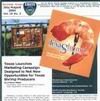Global overview on the use of fish meal and fish oil in industrially compounded aquafeeds: Trends and future prospects
1 Albert G.J. Tacon and 2 Marc Metian
1 Aquatic Farms Ltd, 49-139 Kamehameha Hwy, Kaneohe, HI 96744, USA
2 Hawaii Institute of Marine Biology, University of Hawaii, Kaneohe, P.O. Box 1346, Kaneohe, HI 96744, USA
The finfish and crustacean aquaculture sector is still highly dependent upon marine capture fisheries for sourcing key dietary nutrient inputs, including fish meal and fish oil. This dependency is particularly strong within compound aquafeeds for farmed carnivorous finfish species and marine shrimp.
Results are presented concerning the responses received from a global survey conducted between December 2006 and October 2007 concerning the use of fish meal and fish oil within compound aquafeeds using a questionnaire sent to over 800 feed manufacturers, farmers, researchers, fishery specialists, and other stakeholders in over 50 countries. On the basis of the responses received, it is estimated that in 2006 the aquaculture sector consumed 3724 thousand tonnes of fish meal (68.2% total global fish meal production in 2006) and 835 thousand tonnes of fish oil (88.5% total reported fish oil production in 2006), or the equivalent of 16.6 million tonnes of small pelagic forage fish (using a wet fish to fish meal processing yield of 22.5% and wet fish to fish oil processing yield of 5%) with an overall fish-in fish-out ratio of 0.70. At a species-group level, calculation of small pelagic forage fish input per unit of farmed fish or crustacean output showed steadily decreasing fish-in fish-out ratios for all cultivated species from 1995 to 2006, with decreases being most dramatic for carnivorous fish species such as salmon (decreasing from 7.5 to 4.9 from 1995 to 2006),
trout (decreasing from 6.0 to 3.4), eel (decreasing from 5.2 to 3.5), marine fish (decreasing from 3.0 to 2.2) and to a lesser extent shrimp (decreasing by 1.9 to 1.4 from 1995 to 2006. Net fish producing species in 2006 (with fish-in fish-out ratios below 1), included herbivorous and omnivorous finfish and crustacean species, including non-filter feeding Chinese carp (0.2), milkfish (0.2), tilapia (0.4), catfish (0.5), and freshwater
crustaceans (0.6).
On the basis of increasing global fish meal and fish oil costs, it is predicted that dietary fish meal and fish oil inclusion levels within compound aquafeeds will decrease in the long term, with fish meal and fish oil usage increasingly being targeted for use as a high value specialty feed ingredient for use within higher value starter, finisher and broodstock feeds, and by so doing extending supply of these much sought after and limited feed ingredient commodities.
Click below to download article (PDF):








